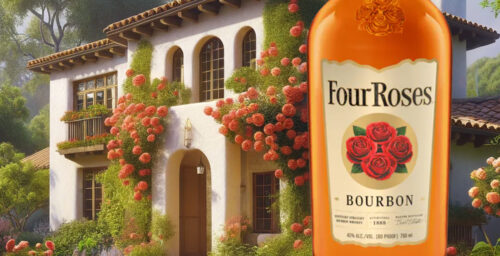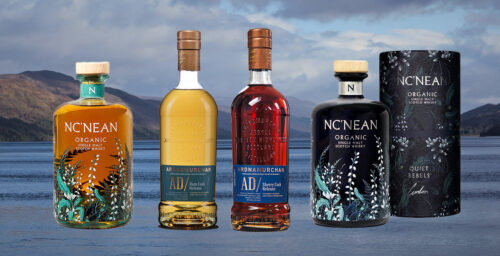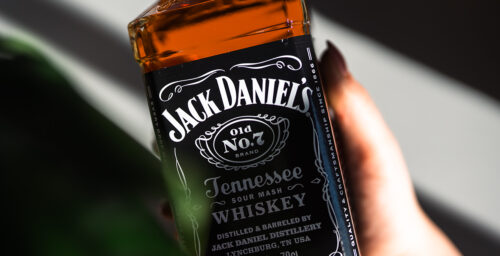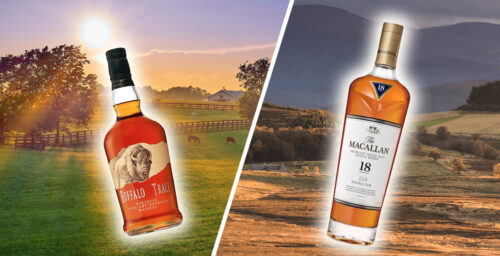Whilst on a recent and highly enjoyable jaunt to South Africa, I was tasked with training the team of a friend and colleague’s soon-to-be-relaunched, three-floor passion-project, Tjing Tjing bar and restaurant in Cape Town. Key to their new offering was an exquisite collection of Japanese whiskies. Only after accepting the task with excited abandon did I realise (with horror) my own relative lack of knowledge on the subject, despite having enjoyed a long-standing and comfortably loving relationship with its well-established cousins from the likes of Scotland and the USA.
I thus began learning more about the subject, and here are the fruits of my labours, a beginner’s guide if you will, to a category that was only officially born less than a hundred years ago, and has suffered the indignation of ridicule by its peers for approximately half of that time, yet has somehow become the underdog champion of spirits, emerging Hobbit-like to trouble the counsels of the Great and the Wise.
Humble Beginnings
By some accounts, Japanese whiskies began to receive a lot of attention on the global market after a certain Nikka Yoichi won Whisky Magazine’s Best of the Best in 2001. Shortly afterwards Yoichi, Yamazaki and Hakushu were all bottled by the Scotch Malt Whisky Society and Japanese bottlings started to win awards, year-on-year to an eyebrow-raising degree (in Scotland no doubt, as my friends North of the border are happy and forthright to attest!) The 21 Year Old Hibiki (translating as ‘resonance,’ or ‘echo’) expression became somewhat iconic after being awarded the Supreme Champion Spirit and World’s Best Blended Whisky awards in 2017.
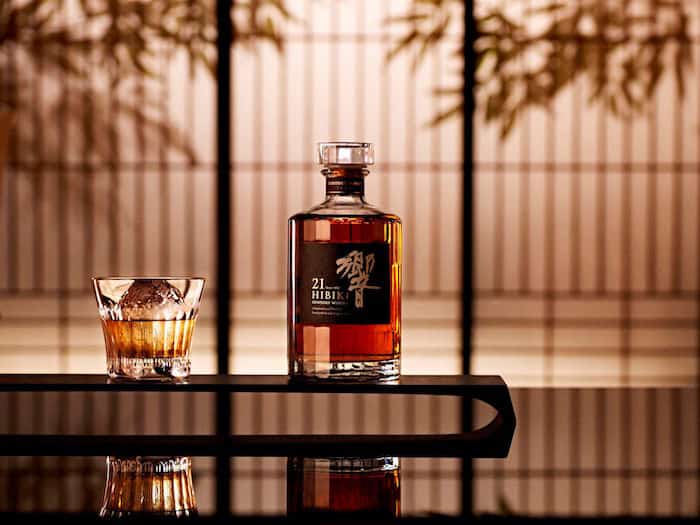
Japan’s whisky industry has been in existence longer than many realize, though is a relatively young category when compared to its Scotch, Irish and American counterparts. The first evidenced Japanese whisky distillery was founded in 1923 with the opening of the Yamazaki Distillery by the now world-renowned Japanese distillers Taketsuru and Torii. Masataka Taketsuru then founded the Nikka Distilling Company in 1934 (following his years of study and apprenticeship in Scotland with the master-makers of Ben Nevis, Longmorn and Hazelburn distilleries – the latter being a magnificent dram and personal favourite, from the recently resurgent Lowland region of Scotland). After returning to Japan with his Scottish wife Rita he built the Yoichi distillery on the north island of Hokkaido in an area that (he considered) to closely resemble the natural environment in Scotland.
Japanese malt whisky’s origins are therefore quite undeniably based on the Scotch model (though I am happy to hear alternative suggestions, so please feel encouraged to share). They have made certain innovations of their own however, such as maturing their whiskies in rare, slow-growing Japanese Mizunara oak (in the case of Suntory’s whiskies), and using ‘specially’ charred new oak in the case of Yoichi (though I am not privy to the exact details of this process).
As Japan has far fewer distilleries than other whisky-producing nations to date and no tradition of trading casks (as has been the practice of blenders in Europe and the USA for hundreds of years), they often distill many different spirit-styles within the same distillery.
Japanese whisky can act as an interesting comparison between Scotch and bourbon, being a Scotch-inspired spirit, but matured in conditions with greater temperature variations (closer to Kentucky) and thereby an increased susceptibility to tropical aging (a theory made famous by the living-legend that is Joy Spence of Appleton Estate Rum).
History
Japan has a long history of producing alcoholic tipples, dating back to written references to sake that can traced back as far as the 8th century. Distillation seemingly arrived in the 16th century and the shochu category followed, soon after.
Whisky is said to have arrived in Japan at the 1854 Convention of Kanagawa, which saw the United States of America and Japan negotiating an international peace treaty. Large amounts of Scotch whisky and bourbon were distributed as friendship gifts, following the common practice of Omiyage, the Japanese custom of souvenir gift-giving. This set the stage for the local production of whisky, which began from the late-1800’s and into the 20th century, with the aforesaid pioneers of the Japanese whisky industry, Torii and Taketsuru.
Torii began making alcoholic beverages at the ripe young age of 20 in 1899. He was seeking to make the first Japanese wine (which later became known as Akadama Port Wine). Torii was fascinated not only with grapes and blending, but the practice of oak-aging, which lead to great success within Japan. This lead to an interest in the whisky industry, particularly Scotch which was already assuming a position of global dominance on the global market, with both its blended and single malt variations.
Taketsuru arrived back in Japan following his studies in chemistry in Glasgow and work-placements at the Longmorn and Hazelburn distilleries. He partnered with Torii at his company Kotobukiya Ltd and they set their sights on creating a Japanese whisky distillery, closely homaging their Scottish idols, which resulted in the Yamazaki distillery in 1923.
Taketsuru and Torii disagreed about the location, the former arguing to build at Hokkaido with its similar terroir to Scotland, the latter a location between Kyoto and Osaka (Yamazaki’s current site), which he preferred due to the microclimate resulting from the merging of three rivers and high water quality. Taketsuru was also keen to produce peated whiskies, which Torii believed to be too rich for the local palate.
Despite these differences in opinion and palates, the two worked together for 10 years, until eventually in 1934 Taketsuru founded the Nikka company and Yoichi distillery, whilst Torii went on to establish Suntory. These two whisky-makers remain the giants and lynchpins of the industry in Japan.
Given these origins and the part Scottish whisky played in the emergence of Japanese whisky, for many years the category was easily dismissed as a copy-cat. However, the Japanese penchant for perfectionism, along with the uniquely local challenges to their craft, lead to significant differences.
Scotch vs Japanese Whisky
So it is clear that the Japanese whisky industry has its roots in Scotland, but what (if any) are the important differences between the two regional categories? I have attempted to lean away from the technical end of this debate’s spectrum, as this is an honest attempt to write inclusively. And as Einstein apparently said, ‘if you can’t explain it simply, you don’t understand it well enough.’
1) Blending Tradition
The Scottish whisky industry is built on blending. Blended whisky accounts for 90% of international sales. As such single Mmalt distillers make a sizeable income in selling to blending companies (such as Johnnie Walker). Japanese Whisky-makers do NOT exchange liquids with each other and hence are challenged to create different styles in-house. Scotch single malts can be perceived as perhaps self-limiting in terms of expression within distilleries, choosing to embrace a ‘house style’ and variations within, which then becomes a cornerstone of their marketing strategies (this is not the case with ALL Scottish malts, Bruichladdich and Glendronach would be great notable exceptions).
2) Mizunara – Japanese Oak
Much is written and said regarding the importance of American white oak (Quercus Alba) and its European equivalent (Quercus Robur), not just in the whisky industry but throughout the entire world of spirits. Much of the romance and passion surrounding single malt Scotch finds root in the mystical art of wood-use and barrel policy (a wise man from Heaven Hill Distilleries once told me with a wink, ‘if you ever want to make friends with a cooper or whisky-maker, don’t ask about age-statements, ask about barrel policy’).
The comparatively recent (but exponentially growing) legend and international reputation of Japanese malts is given further fuel by their having a type of oak apparently unique to themselves. Mizunara purportedly contains esters which add coconut and incense notes to the final whisky character (this sounds fabulous from a marketing perspective but personally I am skeptical of such a convenient over-simplification – and sadly, Mizunara-aged expressions are typically too expensive for me to apply a suitably rigorous tasting-approach).
One point of contention between Scottish and Japanese whisky is the lack of regulation in the newer category. As much as it provides them freedom and licence to express themselves artistically, it leads us to having to take a lot on faith regarding the ingredients and production processes used, and there is a perceived vulnerability to lower-quality producers taking advantage of the lack of controls, especially given the current boom in Japanese ,alts, global attention and subsequent price uplift.
As an example, there are brands of ‘Japanese Whisky’ that in fact import malt spirit from Scotland and grain spirit from Canada, only to blend and mature in Japan itself. Is this important? Does it make for a better or worse product? Dilemmas such as this have arguably held back the rum industry for over twenty years and seen tequila leapfrog them in the eyes of critics and casual drinkers alike.
It will be interesting to see how history and hindsight judges Japanese whisky – will future generations look back on a passing fad with amused interest, or should the old guards of whisky be genuinely worried for their heritage? Time will tell.



